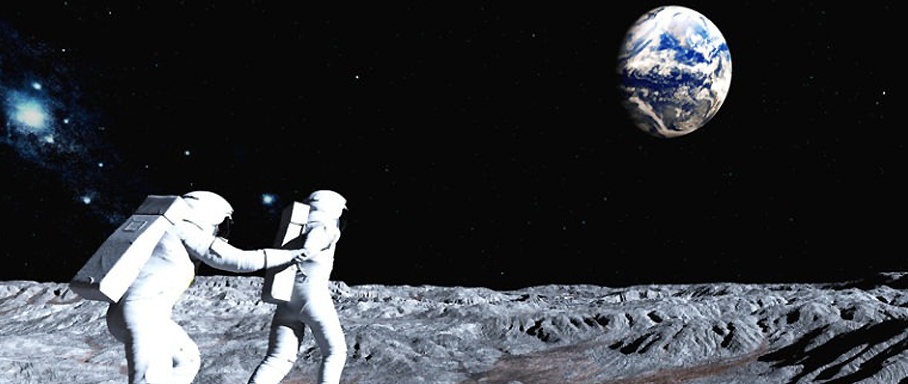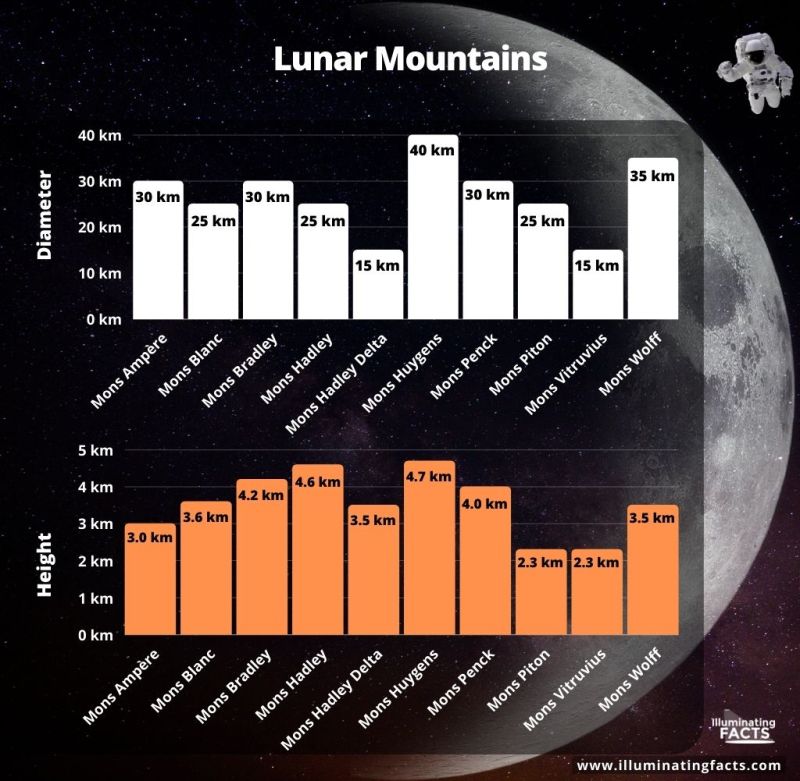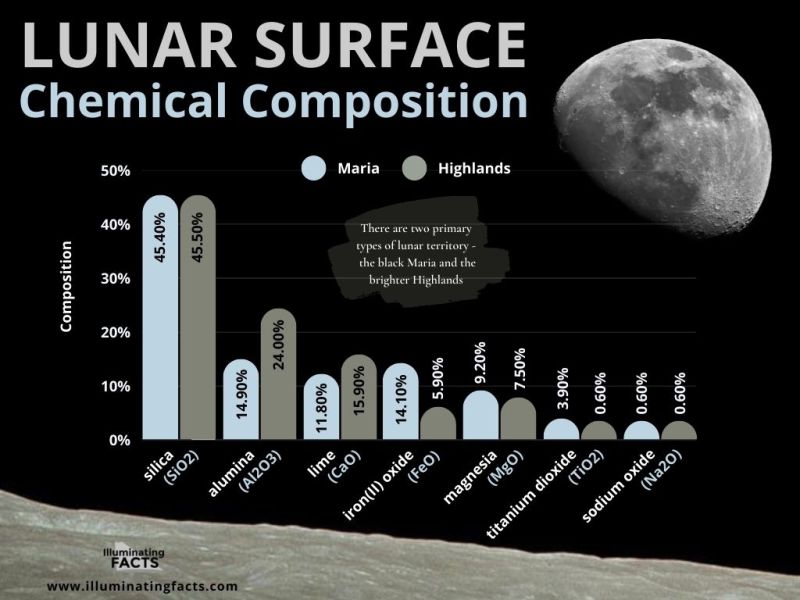The moon is the most studied celestial object in our solar system after Earth. Humans have been trying to access the moon and the efforts to land over there and study it have increased over time. The first landing on the moon was by Neil Armstrong in 1969. Most people wonder what are some of the interesting elements of the moon. With the help of the following graphs, we can evaluate the lunar mountains and the lunar surface chemical composition of the moon to understand this celestial object in an even better way.
Find Out More…
Lunar Mountains in Terms of Height and Diameter
Upon research, it has been found that there are several mountains on the moon’s surface. These mountains have been studied extensively by astronauts to evaluate the landscape of the lunar’s surface. Mons Huygens is the largest mountain on the moon, as per the current exploration. This mountain has a height of 4.7km and a diameter of 40km. It is even bigger than many mountains we see on Planet Earth. The second tallest mountain on the lunar surface is Mons Hadley which is 4.6km in height. The diameter of this mountain is 25km.
The moon has several other mountains as well. These include Mons Bradley and Mons Penck both of which are above 4km in height and have a diameter of 30 km each. Other mountains of the lunar surface include Mons Blanc, Mons Hadley Delta, and Mons Wolff. These three mountains have a height of between 3km and 4km with a diameter ranging from 25km to 35km. Slightly smaller mountains on the lunar surface include Mons Piton and Mons Vitruvius each of which has a height of 2.3km only. However, Mons Piton has a diameter of 25km while Mons Vitruvius has a diameter of 15km only.
Lunar Surface Chemical Composition
The lunar surface comprises two main types of territory which are named Maria and the Highlands. On these lunar surfaces, there are various types of chemical compositions found. The most found chemical on the lunar surface is Silica (SiO2) which is found 45.4% on Maria Surface and 45.5% on the Highland Surface. Alumina (AI2O3) comes second which has a composition of 14.9% on Maria and 24% on the Highlands. Lime is also found on the lunar surface with 11.8% at Maria and 15.9% on the Highlands. Other important chemicals found on the moon include Iron Oxide, Magnesia, Titanium dioxide, and Sodium oxide.



